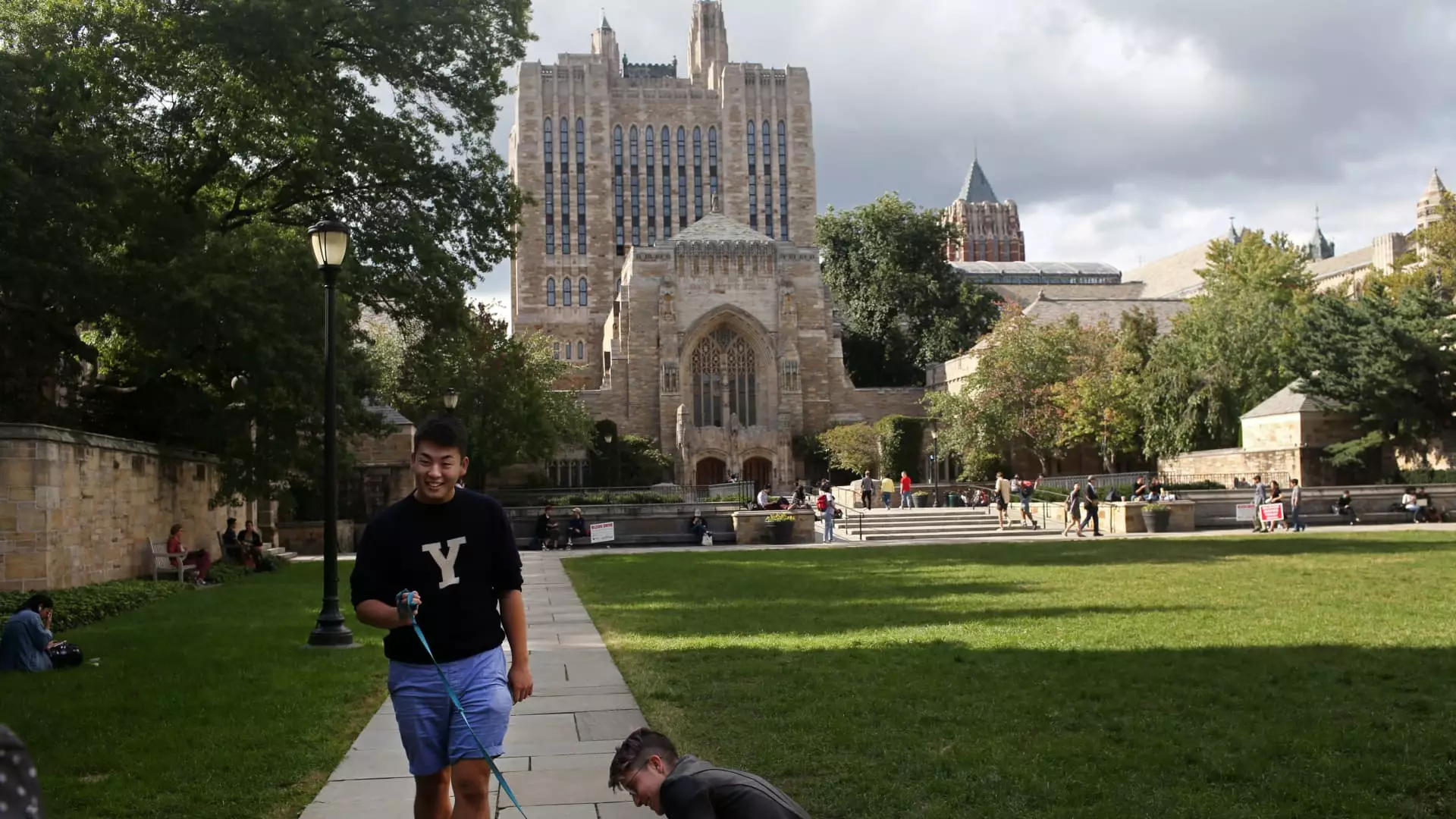The recent decision to impose a multi-tiered tax on university endowments signals a troubling shift in how we perceive higher education institutions. At first glance, this move appears to target the wealthiest colleges—those boasting substantial financial reserves—aiming to generate revenue for broader governmental priorities. However, a deeper analysis reveals that this tax may undermine the very foundations of accessible, innovative, and equitable higher education. Instead of fostering a fairer system, it risks punishing institutions that serve as engines of research and societal progress.
What’s particularly concerning is the framing of this tax as a means to “reinvest” in public good. In practice, it translates into penalizing universities that have successfully accumulated endowments through decades of prudent management and generous donations. These funds are often essential for maintaining cutting-edge research, supporting underserved communities, and remaining at the forefront of innovation. Quantifying this as merely a “tax” ignores the vital role these endowments play in fostering academic excellence and societal development.
Moreover, branding it as a “research university tax” oversimplifies the complex ecosystem of higher education. Many of these institutions operate in a competitive landscape, constantly striving to balance affordability with excellence. Penalizing endowment growth discourages long-term planning and investment, ultimately risking a decline in academic quality and research breakthroughs that benefit society at large.
Financial Chokehold on Leading Institutions and the Threat to Accessibility
Major research universities—Yale, Harvard, Stanford—are being singled out by these new tax measures. These schools, historically driven by robust endowments, are now faced with an additional financial burden that could compromise their core missions. Yale’s prediction of paying upwards of $280 million in the first fiscal year exemplifies how these taxes are more than just numbers; they threaten to destabilize budgets and constrain strategic initiatives.
In an era when higher education costs already act as formidable barriers for many students, these added financial pressures could exacerbate inequalities. Institutions might respond by increasing tuition or decreasing financial aid offerings—a paradoxical outcome considering the original intent to improve access. As colleges struggle to absorb these new costs, the likelihood is that the burden will be shifted onto students and their families, intensifying the cycle of debt and social stratification.
Furthermore, the exemption for smaller colleges—those with fewer than 3,000 tuition-paying students—appears to be a hollow gesture. The focus on large endowments at elite institutions obscures the wider impact: public and smaller colleges are just as vulnerable to financial strains, especially as federal and state funding continues to tighten. The net effect is a bifurcated system that favors wealthier institutions at the expense of diversity and inclusivity.
The Broader Economic and Social Consequences of Elevated Tuition
The unavoidable consequence of raising endowment taxes—and potentially tuition—is a decline in educational accessibility. With colleges already grappling with declining federal funding, restrictions on international students, and increasing operational costs, additional financial burdens are an unsustainable hurdle for many. The risk is that higher tuition and limited aid will deter capable students from low-income backgrounds from pursuing higher education altogether.
Economists and educational analysts agree that colleges are already increasing sticker prices at a concerning rate. Studies reveal that tuition has outpaced inflation and household income growth for decades, creating a pipeline of student debt and social inequality. By compounding these issues with higher endowment taxes, policymakers risk locking future generations out of the academic opportunities they need to succeed.
This escalation in tuition is not a foregone conclusion; it’s a deliberate choice made in response to fiscal pressures that are, arguably, a product of misguided priorities. The focus should instead be on creating a sustainable financial model that incentivizes universities to serve the public good without effectively penalizing their success or innovation.
In a broader sense, these measures threaten to dilute the promise of higher education as a pathway to social mobility. If institutions, starved for revenue, are forced to prioritize cost-cutting over excellence, the ripple effects will be felt across society—diminished research output, reduced diversity, and widened economic gaps.
A Call for Balanced, Forward-Thinking Policy
While it’s undeniable that some universities hoard wealth, penalizing them through punitive taxes oversimplifies the complex economic realities of higher education. A more nuanced and progressive approach would focus on incentivizing collaboration, encouraging fair distribution of resources, and increasing public investment. Instead of punishing success, policymakers should seek to harness the innovative potential of these institutions to address societal challenges.
The core issue isn’t whether universities have large endowments—it’s whether these resources are being used effectively to serve the broader public good. Taxing large universities into submission might provide short-term revenues but risks crippling the research and educational missions that are vital to national progress. Instead, a balanced strategy that promotes sustainable growth, equitable access, and internal accountability would better serve society in the long run.
Ultimately, the current approach reflects a shortsighted view of higher education’s role in society. It reduces institutions to mere financial entities rather than recognizing their potential as catalysts for societal transformation. We need policies that prioritize innovation, fairness, and strategic investment, not punitive measures that threaten to undermine the very institutions that propel societal advancement.

